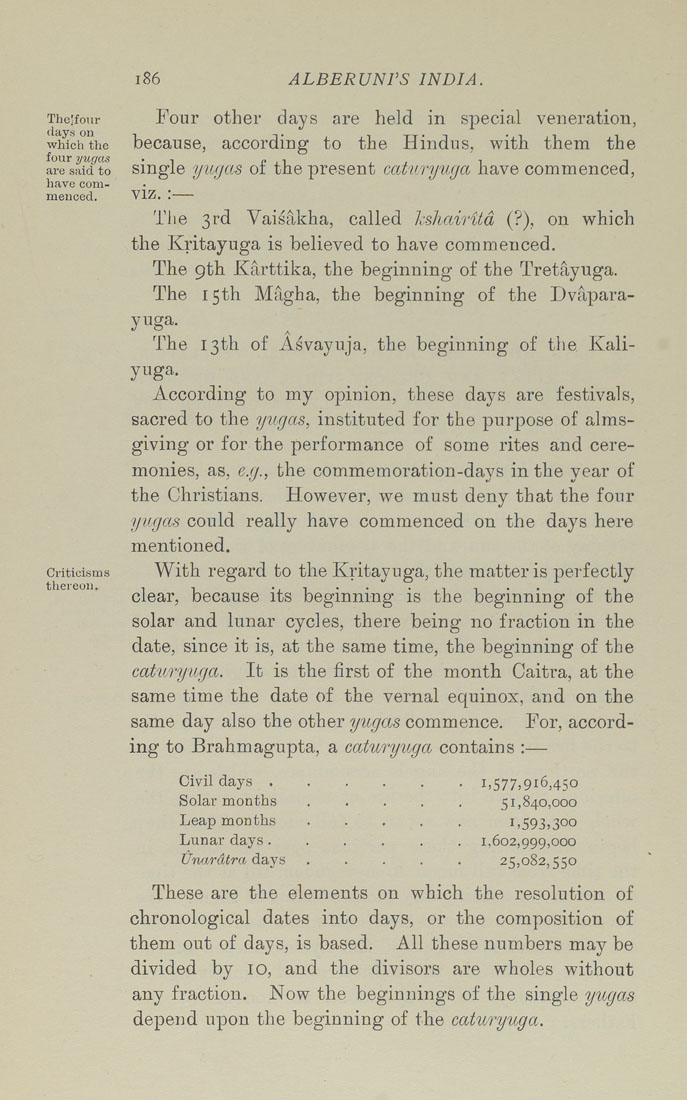i86
ALBERUNTS INDIA.
Thclfour
(lays on
which the
four yugas
are said to
have com¬
menced.
Criticisms
thereon.
Four other days are held in special veneration,
because, according to the Hindus, with them the
single yugas of the present cctturyugct have commenced,
viz. :—
The 3rd Vaisakha, called I'shcturitd (?), on which
the Kritayuga is believed to have commenced.
The 9th Karttika, the beginning of the Tretayuga.
The 15th Magha, the beginning of the Dvapara-
yuga.
The 13th of Asvayuja, the beginning of the Kali¬
yuga.
According to my opinion, these days are festivals,
sacred to the yugcts, instituted for the purpose of alms¬
giving or for the performance of some rites and cere¬
monies, as, e.g., the commemoration-days in the year of
the Christians. However, we must deny that the four
yitgcts could really have commenced on the days here
mentioned.
With regard to the Kritayuga, the matter is perfectly
clear, because its beginning is the beginning of the
solar and lunar cycles, there being no fraction in the
date, since it is, at the same time, the beginning of the
caturyugct. It is the first of the month Caitra, at the
same time the date of the vernal equinox, and on the
same day also the other yugas commence. For, accord¬
ing to Brahmagupta, a caturyuga contains :—
Civil days .
Solar months
Leap months
Lunar days .
Unardtra days
1,577,916,450
51,840,000
1,593,300
1,602,999,000
25,082,550
These are the elements on which the resolution of
chronological dates into days, or the composition of
them out of days, is based. All these numbers may be
divided by 10, and the divisors are wholes without
any fraction. Now the beginnings of the single yugas
depend upon the beginning of the caturyuga.
|








